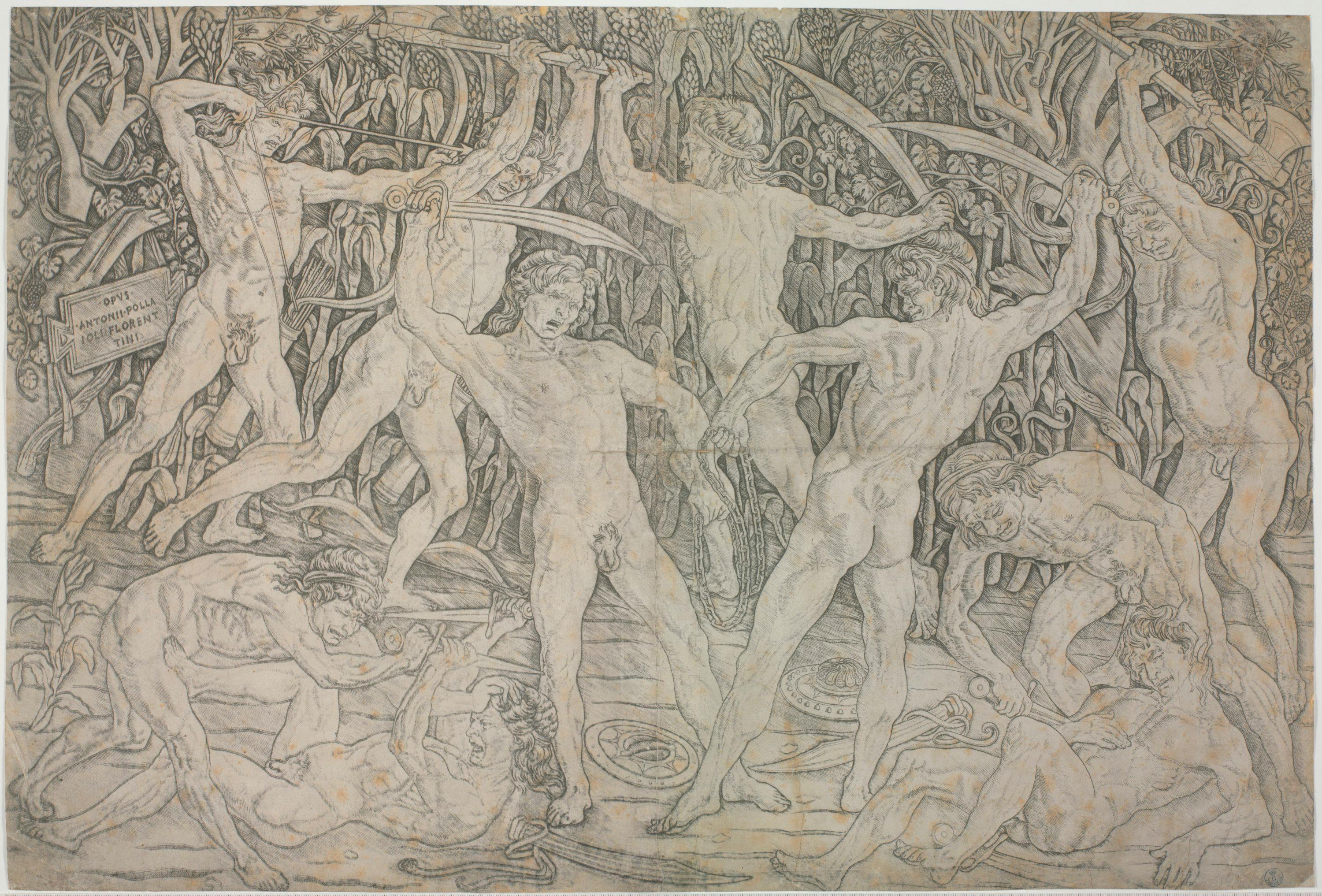Battle of the Nudes
Antonio Benci, called Antonio del Pollaiolo or Pollaiuolo (Firenze, 1431-1432 – Roma 1498)
«OPUS / ANTONII POLLA/IOLI FLORENT/INI»
An authentic icon in the history of engraving, this is one of the most famous of the many images reproduced using the new printing methods of the early Renaissance, and the first work to be clearly signed by its maker. Many formal elements contribute to its unique significance, such as the exceptionally large format for the time and the programmatic nature of the composition which explicitly draws on figurative themes from classical antiquity. Characterized by a mysterious subject matter, the composition rejects any connection to a literary text of Roman history or mythology, or indeed any specific moral or allegorical interpretation. Instead, it appears to be an exercise in anatomical mastery, exhibiting the irrepressible and almost visionary vitality that was the very essence of the trained goldsmith’s art. The chronology of the work is also uncertain but certain compositional similarities to the “Martyrdom of Saint Sebastian” (completed by the artist in 1475 and currently exhibited at the National Gallery in London) suggest a date between the early 1460s and 1470s. The printing date is also problematic in that it involves the knotty question of mutual influences between Pollaiolo and Andrea Mantegna in terms of graphic style, and the question as to which of the two artists first employed the new engraving technique.
